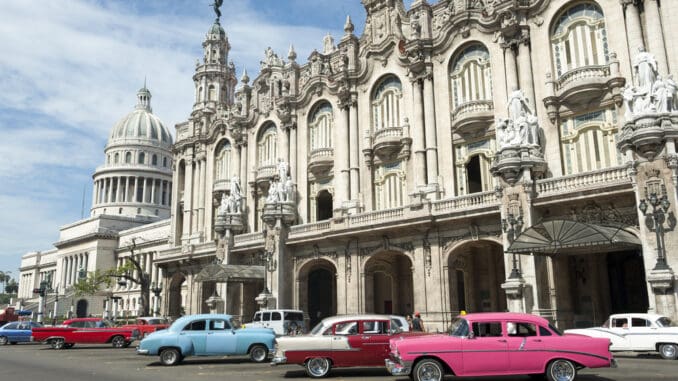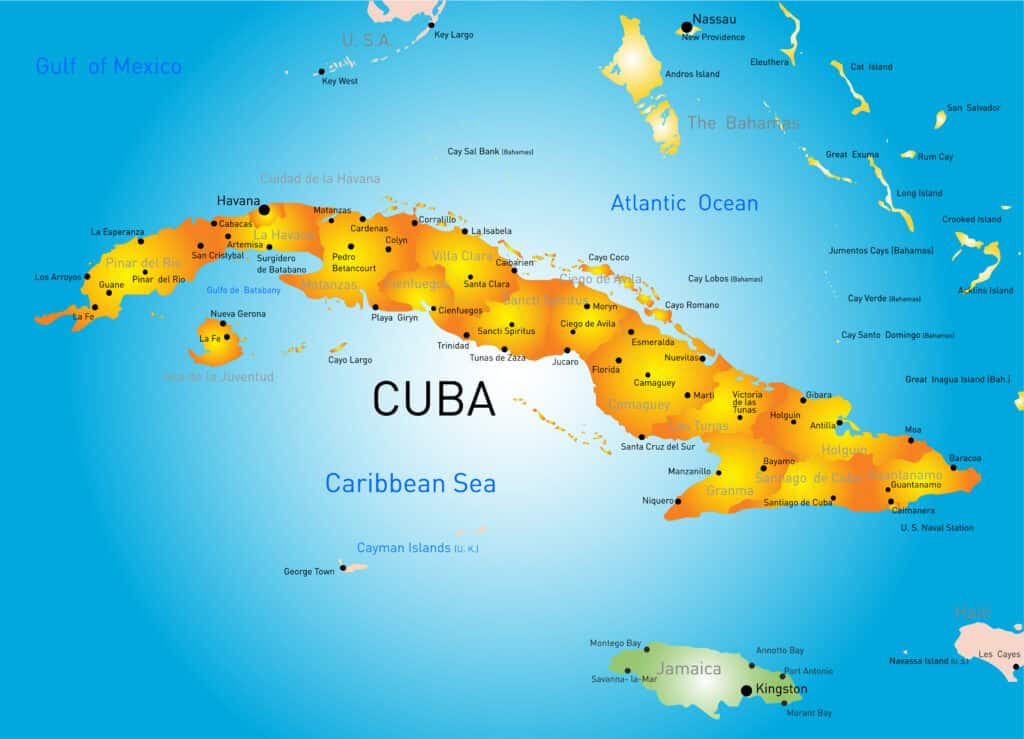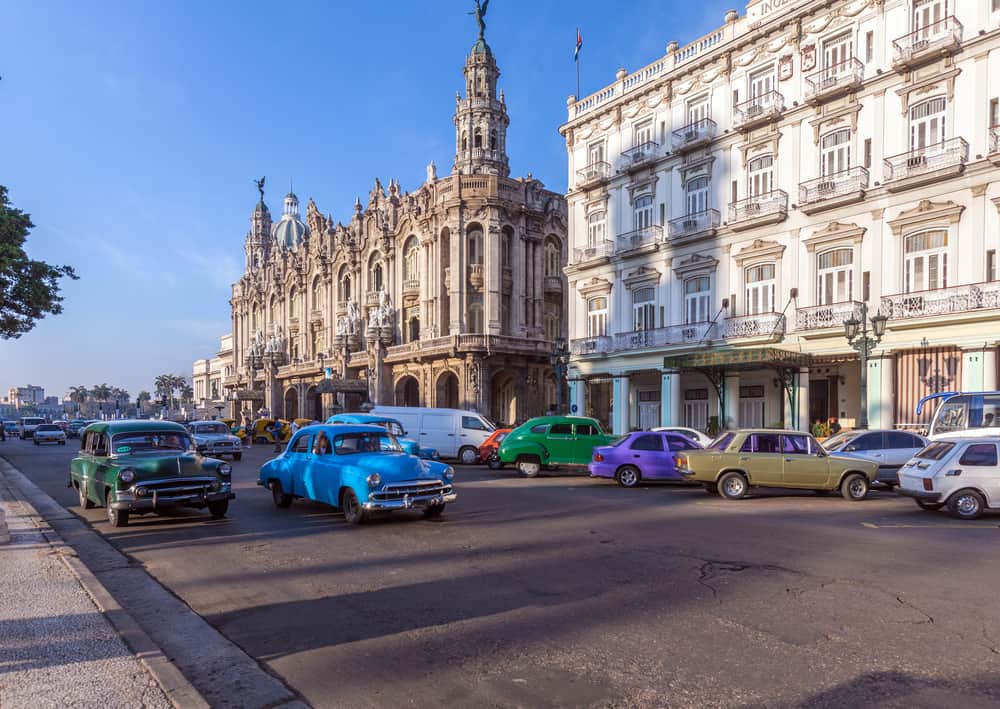
Havana is the capital of Cuba, and it is one of the oldest capitals in the world, having been officially named a capital in 1592. Havana is the most populated city in Cuba and has played a major role in the history of the nation, right from the very first time that settlers landed there.
Where is the Capital of Cuba Located?

Havana takes up a huge amount of space in Cuba. It can be found on the north of the island, although it stretches out very west (where the original settlers started to lay their claim to the island).
Havana runs along the Straits of Florida and if you traveled south from the Florida Keys, you would eventually bump into Cuba. This is part of the reason why Havana is located on this part of the island. It helps to facilitate trade.
Brief History of Havana

Havana was founded by Spanish settlers in 1515. There were other established settlements on the island, and the location of Havana was somewhat of a ‘Plan B’. The settlers couldn’t get a community running in the south, so they headed to the south. The communities around where Havana was founded eventually became part of Havana proper later on down the line.
Over the years, Havana worked extremely hard to become a major port in Cuba, and it eventually did become that. However, it had to deal with regular attacks from pirates and the French. It eventually became the capital of Cuba at the tail-end of the 16th Century.
In the 17th Century, the now capital city of Cuba expanded rapidly. At the time, this was one of the most important shipyards in the entire region (including the whole of North America).
By the 18th Century, Spain was locked in the 7-years war with the British. Ultimately, Havana was captured by the British and occupied for a year. However, Havana played an important role in the end of the war. Having been occupied by thousands of British soldiers, the British agreed to peace if Spain handed them Florida. The trade was made, and the war ended.
In the 19th Century, Havana gained rapid growth. Trade between North America and Cuba shot up, and Havana was at the center of it all. Havana was all set to become a major player in this part of the world. Although, this was never to be.
The following history of Havana is of Cuba as a whole, although since Havana is the capital of the country, it did play a major role in the things that happened. In the early 20th Century, Cuba entered the Republic Period, which brought growth and prosperity to the region, albeit with major sacrifices in some areas. Eventually, this resulted in the Communist Revolution, with that system of government standing to this very day. This soured relations with the United States, and while other countries wish to trade with Cuba, the United States will not allow them to do so without the threat of sanctions. This means that, while Havana is still a hotbed of activity, it hasn’t quite reached the heights that it should have met at this point in its history.
When did Havana become the Capital of Cuba?

Havana became the capital of Cuba almost as soon as it was founded, at least in comparison to other capital cities around the world. It was given the title of capital in 1592, and it hasn’t lost it since.
Why is Havana the capital of Cuba?
Well, for starters, it was a bustling trade hub. The vast majority of capital cities have been places that have been vital to the economy of an area. It allows politicians to be moved to places where they can easily make decisions based on what is going on around them. However, this is only part of the reason why Havana ended up being the capital of Cuba.
Havana is in a unique geographical position. There are larger mountains and hills around the area, which makes a good place for fortifications. This allowed the Spanish to keep a look over the bay and defend the region where possible.
Best Places to visit in Havana
Havana has seen a sharp rise in tourism over the years, although the highlights for tourists seem to be the older parts, with very few purpose-built tourist destinations. Here are some of the best places to visit in Havana.
Old Havana
This is the part of the city that was created during the early days of Havana being around. As the name suggests, it is mostly old buildings. However, since Havana was a defensive town, a lot of them are old military buildings, something which is always exciting to look at.
Playas de Este
This is one of the most famous beaches in Cuba, so if you want to enjoy the beautiful sunshine, then Playas de Este is where it is at!
Fusterlandia
If you are an art-lover, then you need to visit Fusterlandia. It is a large collection of art installations put together by Jose Fuster, a famous Cuban artist. It is located a few minutes outside of Havana, and it is probably one of the most-visited tourist destinations in the area.
El Morro
El Morro is an old Spanish fort, but with the military still stationed there. Exploring the fort is an adventure in itself (although, perhaps not in the blistering heat), but the area is also rife with famed CUban activities. This means cigar and rum shops, with a few markets for good measure.
Plaza De La Catedral
This is one of four main squares in Cuba, and is arguably one of the prettiest. Plaza De La Catedral boasts a stunning cathedral, surrounded by loads of beautiful buildings (with some great souvenirs to buy). A lot of people head here to swap stories of Cuba too, so you may even be able to pick up on some amazing history of the country while you are here.
